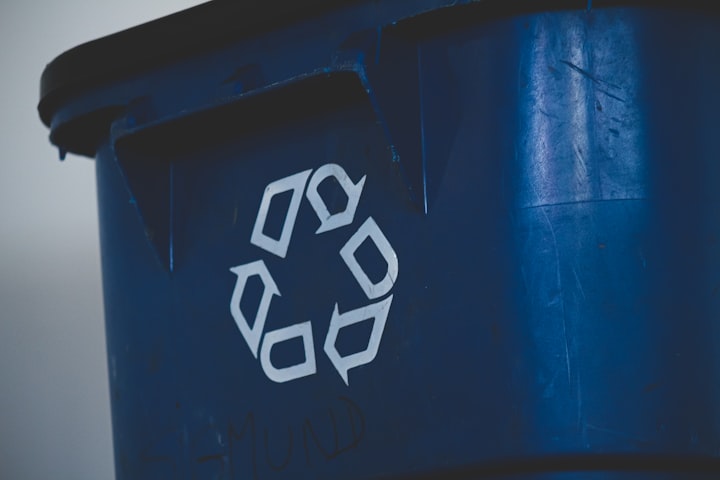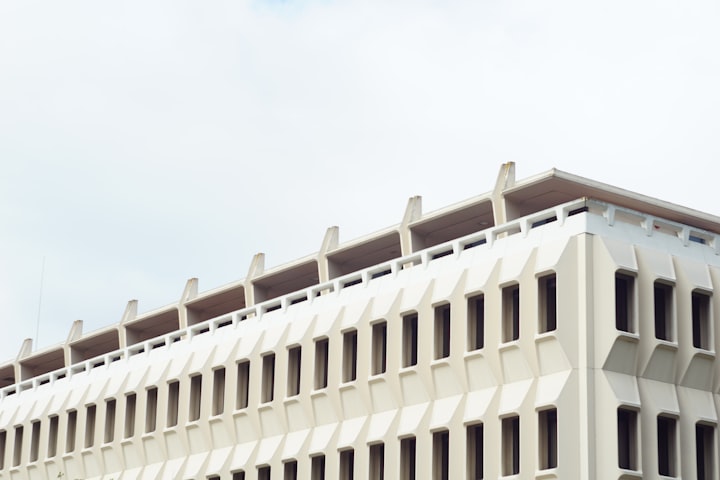When I was growing up, my elementary school featured a recreation area with an entire set of toys and equipment designed with all sorts of recognizable recycled materials just about everyone is quite familiarized with from car tires to wooden pallets; through the eyes of a child, you would never tell the difference between what I had versus the average manufactured playground in your local park due to the superb paint job. This subtle incorporation of green consciousness as well as its integration being so seamless despite being unorthodox by nature greatly resembles pieces classified under Rasquache practices as it “comes from the discards, fragments, and even recycled everyday materials [...] to make the most from the least.” The practice of building a playground consisting of repurposed commodities accurately demonstrates the elements of stance, aesthetic, and function found in Rasquache practices as it reusing commonly tossed resources once used throughout a long period of time (essentially getting a second chance), proudly displays a lower economic status or underdog perspective in a public setting, and ushers a firm sense of utility in the final product.
Rasquache works go beyond simply getting a little creative by hobbling together some scraps of distinguishable items and strive more so to highlight the history behind the objects being used themselves. Simply recycling or reusing trashed materials is not what makes something Rasquache but rather the careful picking and choosing of materials to be utilized, to focus on specifics such as the lasting value that comes with the material or where the materials derived from; in essence, it is finding justification in the use of the substances over other, more common place materials designed for the product in question. The recycled playgrounds I speak of stay true to this tradition as the mediums to be used are those that are quite commonplace in my community, some existing for multiple generations and others making way for their own. I grew up in the city of Oxnard in Southern California, a working-class environment filled with family-owned mechanics and delivery services in just about every district, so things like tires and wooden pallets are very visible and used on the regular given the sheer quantity. For the sake of the playground, these discarded items take on a new role unforeseen given their original function; the tires make for great base components for installations like swings, climbing walls and see-saws while wooden pallets act more as sturdy units fit for making jungle gyms in particular. And, while relatively new, Amazon has become quite the household name so much so that it is practically spawning its own generation in the process, allowing for their plentiful buildup of packaging to be as great an asset as the other materials for this repurposing venture. Their packages might not be useful for structural integrity, but they do make for a good substitute as the flooring for the recreational turf, saving on shavings. For these playgrounds to be so resourceful in bringing labor class related objects out of retirement and restore them to become useful once again, maybe even more practical than before in some cases, truly captures the multigenerational theming found in Rasquache.
The works of Rasquache always manage to strike a good balance along the spectrum of aesthetics, aiming to allocate both the rough, unpleasant and the mainstream appeal. To “embellish repurposed or cast-aside items with personal and cultural flair” that embody the environment around it helps to appreciate and bring to the forefront the sheer, positive impact of the working-class citizenry and these repurposed playgrounds accomplish exactly that. The whimsical, vast array of colors on display can only do so much to mask the recycled items in plain sight; cut, paint, and reconfigure these objects to any extent, they still maintain a familiar presence in the presentation, all of which is intentional. Having these materials be identifiable helps to bring the attention of the public eye toward the often-overlooked businesses these items derive from, including but not limited to the tires highlighting car mechanics or old piping referencing self-owned plumbing firms. The bright colors serve to make these labor-class related items stand out with pride, to beautify what would otherwise appear as drab and illustrate the good that comes from those in a community through the delightful visuals. These occupations are often criminally underrepresented for their efforts and contributions to society, so to see materials associated with their respective field of work take new form in these dazzlingly vibrant recreational areas really sparks newfound respect for their presence and “to let them know, in the midst of their daily rounds, that they, too, are recognized and worthy of being recognized” as just as part of the community as a whole. While using reused materials as a base for these playgrounds initially seems to be off putting when relating to those on the lower end of the economic spectrum compared to the thousand-dollar playgrounds in more affluent areas, the colorful flare helps to ameliorate the disapproving outlook and instead portrays those of the working class as the resilient underdogs that they are like any other Rasquache piece.
While it is true that most art does not appear to serve any real purpose outside of the visual aspects, Rasquache art manages to capture this hybrid of ornamentation and practicality as one. The function behind Rasquache is just as integral as the stance and aesthetic the work embodies, and a playground built from repurposed objects does provide this sense of utility in the form of both gifting children access to exercise their natural, adolescent tendencies to their hearts content as well as helping gear their minds towards recognizing and distinguishing one’s own safety in a given environment in the future. Recreational establishments cater well to appease a child’s sense of wonder, acting as an expansive and varied world for kids to explore, actively engaging with all the playground has to offer. Having the diverse assortment of attractions available in one space does more for fulfilling a child’s need for active amusement more so than what a simple open field can hope to accomplish. On top of this, these recycled playgrounds consisting of recognizable materials give off a sense of familiarity, allowing children to relate this area to the good, working-class community they have grown up in and attribute the same sentiment of comfort they have with their home. This is fundamental in developing adeptness in understanding and establishing that one’s home is much like a safety net, one in which, when in doubt, can assist in ameliorating issues plaguing general livelihood; with this occurring at such an impressionable age, these feelings are well entrenched through maturation. Providing children with these recycled playgrounds is a productive means of giving them the opportunity to adequately learn through playing outside, supplying an excellent function just like a Rasquache inspired product.
Learning about Rasquache and the elements that encompass it during this course has really opened my eyes to where I am now able to spot its influences my own life. Many of the things I have created for myself, funnily enough, really do display the same expressions I have observed in Rasquache pieces, leading me to theorize that this behavior of mine stemmed from a cherished experience in my childhood; the key moment being my involvement with the recycled playground featured in my elementary school, substantially aiding my case that this practice truly epitomizes Rasquache at its core. When I was in grade school, the campus was still relatively new and not exactly well funded, so much so that some teachers taught outside since they did not have their own classroom and, of course, there was no recreational installation available but merely a small, open field. In the third grade, this all changed for the better, as our school had partnered with local companies to contribute their excess materials like tires, wooden pallets, water jugs, old piping, and more all for the erection of an actual playground. Everyone took part in the playground’s building, each grade being tasked with anything from painting to hands on construction; the final product came out to be a flamboyant, colorful marvel and cemented my admiration for this type of investment by getting to fully appreciate its implementation. This exposure to this sort of repurposing practice has definitively ingrained my resourcefulness attitude as seen with other items I have gone on to make, further nurturing my epiphany on this practice being akin to other Rasquache works. Now in college, I can actively point out features in my dorm room to be Rasquache inspired. From party cups serving as writing utensil holders to using a bar stool draped with a pillow cover acting as a nightstand and even simply turning the packages I receive from back home into usable trash cans, I continue to pursue these attributes in almost an instinctual manner. Taking part in the making of this recycled playground has in turn made me find great pleasure in engaging in Rasquache practices, demonstrating how this idea is to also be considered Rasquache in its own right.
What is so vital in making Rasquache what it truly is the “filling of an all available, empty space with bold display,” one that is fully aware of its composition and dignifies its presence with its awe-inspiring design, and the example of recycled playgrounds captures this to a tee. The dignified and creative use of what most would consider to be trash, the respectful representation of the integral, tireless work of the laboring-class community, and the sheer functionality of these repurposed recreation areas all exemplify the heart of what any Rasquache piece strives to achieve. With these ideas in mind, recycled playgrounds can definitively be considered amongst the ranks of other distinct examples of the same ilk found in Rasquache.
Works Cited
Casillas, Dolores. Rasquache and Domesticana. 2/7/2021.
Cooper, Katherine. “We should all be celebrating (and defending) this powerful Chicanx aesthetic.” Archeticultural Digest. May 2, 2018. Accessed 3/1/2021. https://www.architecturaldigest.com/story/we-should-all-be-celebrating-the-rasquache-aesthetic.
Mesa-Bains, Amalia. “Domesticana: The Sensibility of Chicana Rasquache.” Aztlán: Journal of Chicano Studies. Vol. 24, no. 2. Fall 1999. 3-13.
Welshire, Lawrence. “Ramiro Gomez’s Domestic Disturbances,” New York Times. August 14, 2015. Accessed 3/1/2021. http://www.nytimes.com/2015/08/16/magazine/ramiro-gomezs-domestic-disturbances.html?_r=0.
Ybarra-Frausto, Tomás. “The Chicano Movement/The Movement of Chicano Art.” Exhibiting Cultures: The Poetics and Politics of Museum Display. Eds. Ivan Karp and Steven D. Levine. Washington D.C.: Smithsonian Institute Press, 1991, 128-150.







Comments
There are no comments for this story
Be the first to respond and start the conversation.